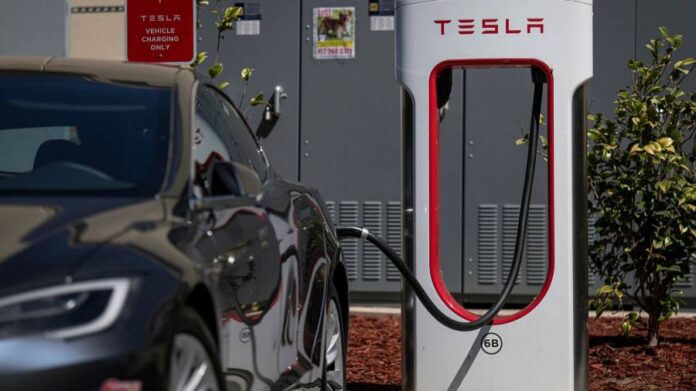US stocks dropped on Wednesday, led by technology shares, after Federal Reserve officials highlighted the need for Congress to agree on a new round of stimulus to support the economic recovery.
The S&P 500 lost 2.4 per cent in a reversal that accelerated toward the close, marking its fifth down day in six trading sessions. The benchmark is now more than 9 per cent off of its record high in August.
The Nasdaq Composite fell 3 per cent, bringing its losses to about 12 per cent since August. Tesla slid 10 per cent after the electric vehicle maker’s founder Elon Musk pledged to halve the cost of the cars’ batteries but also warned of “the extreme difficulty of scaling production of new technology”. Apple and Google parent Alphabet each lost more than 3 per cent.
Stocks retreated as Fed officials used a series of public appearances to make the case for additional fiscal stimulus in the US.
Jay Powell, the Fed chairman, argued for Congress to do more to support the recovery, on top of the series of relief packages passed early in the pandemic, as did Charles Evans, Chicago Fed president. Richard Clarida, the Fed vice-chairman, told Bloomberg Television that “the economy is recovering robustly, but we are still in a deep hole”.
“When you hear that from the raft of Fed speakers, particularly from the top, it is of concern,” said Quincy Krosby, chief market strategist for Prudential Financial.
Krishna Guha, vice-chairman at Evercore ISI, said the Fed’s “increasingly shrill calls” for more fiscal support were “shaking confidence in the outlook given near-certainty that this additional fiscal support will not be forthcoming before January at the earliest”.
Ms Krosby said there were also fears about the emergence of a second wave of coronavirus infections, which could prompt localised lockdowns in order to stop the spread and have devastating consequences for the recovery and for equity markets.
“Anything that jeopardises the recovery of the US economy makes the stock market vulnerable,” she said.
Trevor Greetham, investment strategist at Royal London, cautioned that US stocks were likely to remain “choppy in either direction” as the economy was at an “inflection point” where “the rapid reopening phase is coming to an end and we don’t know what will happen next”.
Nervous investors sought out the safety of the US dollar. An index tracking the greenback against six trading partners’ currencies rose 0.4 per cent at one point to 94.4, its highest level since late June. Gold prices, however, fell 2 per cent to $1861.5 a troy ounce.
Meanwhile, European bourses rallied after the European Central Bank urged the EU to consider making its pandemic recovery fund permanent, although they shaved their gains as the US market turned gloomier. The region-wide Stoxx Europe 600 closed higher by 0.6 per cent, having gained 1.5 per cent at one point. Frankfurt’s Xetra Dax index rose 0.4 per cent after earlier being up 1.4 per cent.
The EU is already set to borrow €1.35tn to fund a revival of the region’s virus-stricken economy.
Making the fund permanent would provide strong support to the economically weaker, tourism-dependent nations of southern Europe, said Sabrina Khanniche of Pictet, because it would “reduce their need” to borrow expensively on the basis of their own credit ratings — something that could risk the continent spiralling into renewed debt crises. “Funding them with supranational debt will really help.”
The yield on Italian 10-year bonds, which is a barometer of appetite for funding peripheral European governments, briefly fell to 0.823 per cent, close to a record low. Yields move inversely to prices.









